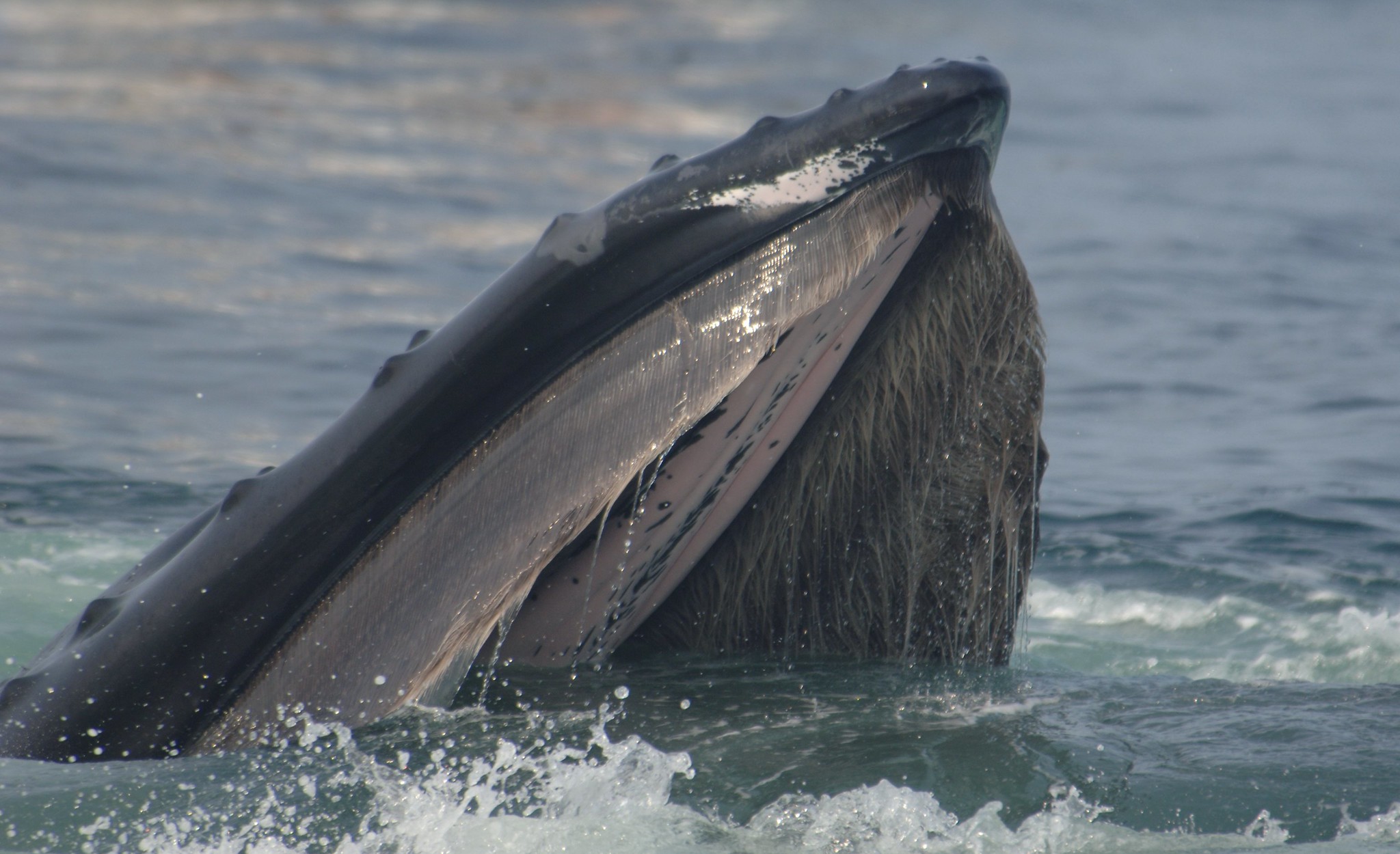How whales filter feed without choking
Baleen whales have a unique, previously unknown organ for swallowing massive amounts of prey-filled water
Delaney Dryfoos • March 23, 2022

Humpback whales have a unique “oral plug” to protect against choking on water. This species of baleen whale feeds by filtering seawater laden with prey through its toothbrush-like baleen bristles. [Credit: NOAA Photo Library | CC BY 2.0]
All mammals have evolved ways to keep food from clogging their airways, but whales have the added challenge of keeping tens of thousands of gallons of water from flooding their lungs. New research finds that whales who feed by engulfing water filled with krill and other plankton have a unique organ in the back of their mouth that allows them to swallow prey while still protecting their airways.
Baleen whales are marine mammals with bristle-like structures in their mouths used to filter out bits of food from the ocean. These calcified hairs are made of keratin, the same protein that makes up our hair and fingernails. The bristles are attached to special plates at the whale’s gumline and sieve out tiny crustaceans from huge gulps of seawater.
This group, made up of blue whales, fin whales, humpback whales and others, are known as lunge-feeding whales. To eat, they swim at high speeds and open their mouths to nearly 90 degrees. Water up to the volume of their own body — approximately 18,750 gallons for a 50,000-kilogram (110,231-pound) fin whale — then floods into their mouths, creating tremendous pressure.
Marine biologists were unsure how this pressure didn’t choke off a whale’s airway, until now. Researchers found a large structure made of muscle and fat that plugs the entrance to the whale’s respiratory tract during feeding, according to a study published in Current Biology in January.
The researchers discovered this new anatomical structure while dissecting dead fin whales at a commercial whaling station in Iceland and named it the “oral plug.” This organ allows lunge-feeding whales to eat thousands of pounds of food every day without choking. Two of the largest animals on Earth, the blue and fin whales, and other baleen whales maintain their gigantic frames by swallowing an approximate 11 kilograms (24 pounds) of krill with every gulp.
The plug protects the whale’s pharynx, a tube-shaped structure that leads to both the respiratory and digestive tracts. With the plug in place, a whale can collect krill-laden seawater without choking. The water then drains back into the ocean through the baleen, leaving the tiny, tasty crustaceans in the whale’s mouth.
When a whale is ready to swallow the critters it has filtered, the oral plug shifts upward to protect the nasal cavities and blowhole, the opening a whale uses to breathe. Simultaneously, cartilage and a muscular air sac clench and close off the entrance to the lungs. This leaves the digestive tract as the only opening.
To visualize how this works, imagine a human’s uvula, which moves back to block our nasal passage, while our windpipe closes up when we swallow food. The oral plug is similar to the uvula in that it allows these whales to feed while swimming at high speeds without choking on water and krill, says Kelsey Gil, a zoology researcher at the University of British Columbia.
Most previous knowledge about whales comes from smaller toothed whales and porpoises, which have completely separated respiratory and digestive tracts. Before the discovery of this new organ, many scientists assumed that lunge-feeding whales had a similar separation, according to Gil.
The oral plug hasn’t been described before because it exists in a part of the whale that is very difficult to access, says Gil. “We were just kind of lucky enough to have the opportunity to see into the back of the mouth, notice that this was there, and then remove and dissect it.”